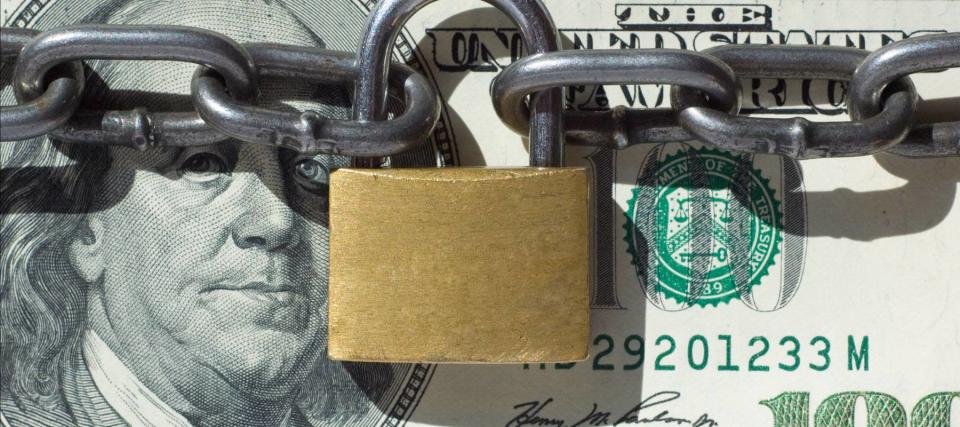
Looking for a nearly risk-free place to invest your savings?
You could open a garden-variety savings account, but your interest will be practically microscopic. A high-yield savings account will offer more, but a certificate of deposit could be an even stronger option.
While you’d be happy to find a savings account paying 1% APY right now, some CDs are paying 2%, 3% or more.
But to earn superior interest, you better believe that you’re going to have to give the bank something in return.
Don’t miss
Too many Americans are still missing out on cheaper car insurance
A TikToker paid off $17,000 in credit card debt by ‘cash stuffing’ — can it work for you?
What do Ashton Kutcher and a Nobel Prize-winning economist have in common? An investing app that turns spare change into a diversified portfolio
How do CDs work?
So, here’s the not-so-fine print with CDs: You’ll have to agree to let the bank hold on to your money for months or years. That’s called the CD’s term.
You might choose to stash your money away in six-month, two-year or five-year CDs. Normally, the longer the term, the higher the interest rate.
For example, CIT Bank currently offers 0.30% APY on its six-month CDs, compared to 2.10% APY on its 13-month CDs.
The payout from a long-term CD can be enticing, but you may have to lock your money away for a long time.
If some financial emergency comes along and you need to get at your money, tapping your CDs could be costly.
The pros of investing with CDs
Certificates of deposit have been paying very low rates for years, but that is changing in 2022.
CD rates have historically increased when the Federal Reserve raises its key policy rate — something officials have already done multiple times this year.
So instead of just being a more lucrative alternative to savings accounts, CDs may start to look more attractive when compared to other kinds of investments, too.
And as we said at the beginning, CDs are nearly risk-free. You can put up to $250,000 in CDs and will never lose that money as long as your account is with a bank insured by FDIC or a credit union insured by NCUA.
The cons of investing with CDs
While certificates of deposit are becoming more profitable this year, that still doesn’t make them a potent tool for growing your money.
Locking your money in a CD with a 2% interest rate won’t really make you wealthier when the Federal Reserve is projecting a 5.2% inflation rate this year.
You can also lose money if you go back on your bargain with the bank and withdraw your money early. The rules vary, but generally you’ll have to pay a penalty equal to a chunk of your interest.
For example, if you close out a one-year CD too soon, you could say goodbye to six months’ worth of interest. If you’ve had the CD only two months, the penalty would eat into your original deposit amount. The early withdrawal penalty for a five-year CD might be a full year of interest.
Another risk is that interest rates keep rising while you’ve got your money locked up, and your savings will miss out on the opportunity to earn better returns elsewhere. That said, there are ways to mitigate that risk.
Types of CDs and CD laddering
All of that describes the workings of a traditional, fixed-rate CD. There are other varieties:
“Liquid” CDs allow you to make withdrawals more easily and without financial penalty.
Variable CDs have interest rates that rise or fall according to some benchmark, like the Consumer Price Index, the prime rate or the performance of the S&P 500.
“Bump-up” CDs allow you to take advantage of rising rates with a limited number of boosts to your interest during the term.
To get that flexibility, you may have to accept a lower interest rate when you open these kinds of accounts.
But there is a strategy that can allow you to grab onto rising rates using plain-vanilla, regular CDs. It’s called “laddering.”
You simply divide your investment across multiple, staggered CDs so that every year you have CDs that are maturing.
This way, you can enjoy the higher initial interest rates from longer-term CDs and also have regular opportunities to invest in new CDs at even better rates.
Where to get CDs
While certificates of deposit have their downsides, they can still earn a place in the portfolios of risk-averse investors who want to keep their money safe while maintaining more of its purchasing power.
Opening a CD can be as simple as visiting your nearest bank or credit union. Smaller, local banks or credit unions will often give you better rates than the big national institutions, and online-only banks can offer great deals because of their lower expenses.
When comparing CDs online, look for a minimum deposit that you can manage, although some banks have CDs with no minimum opening requirements.
You’ll want to look for the best rates and find CDs at your sweet spot, with a good yield and a term that’s doable. Think about your current savings goal: How long can you afford to lock away your money?
Putting cash out of reach for years will be a non-starter for some people — but if you’ve got money languishing in a low-rate savings account that you never touch, CDs might be an easy switch.
What to read next
Mitt Romney says a billionaire tax will trigger demand for these two physical assets — get in now before the super-rich swarm
There’s a ‘perfect storm’ brewing in the multifamily housing market — here are 3 of the easiest ways to take advantage
How Whole Foods and Walmart can help you hedge against inflation, even if you don’t invest in them
This article provides information only and should not be construed as advice. It is provided without warranty of any kind.
Source: https://finance.yahoo.com/news/interest-rates-rising-locking-money-100000626.html